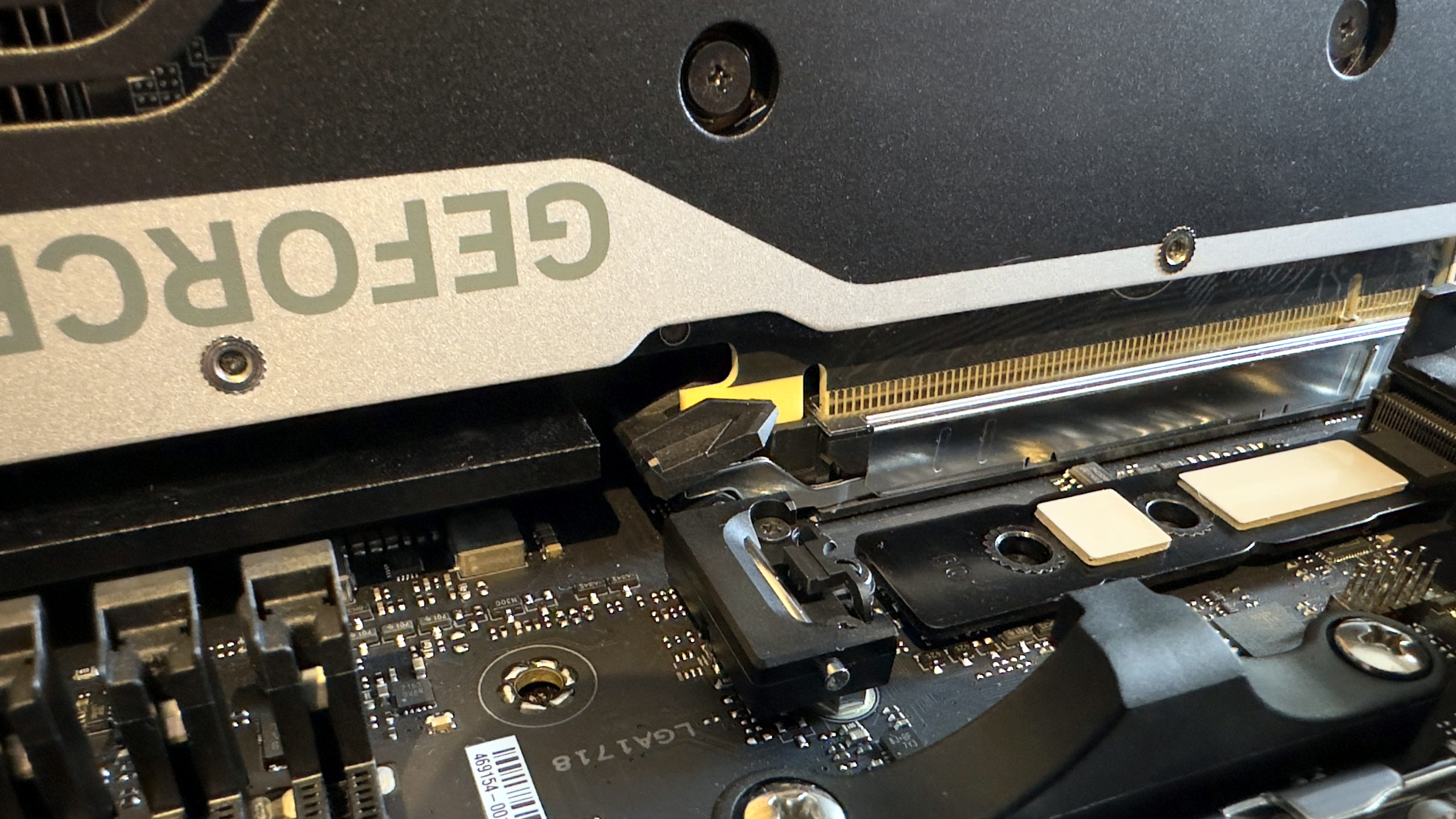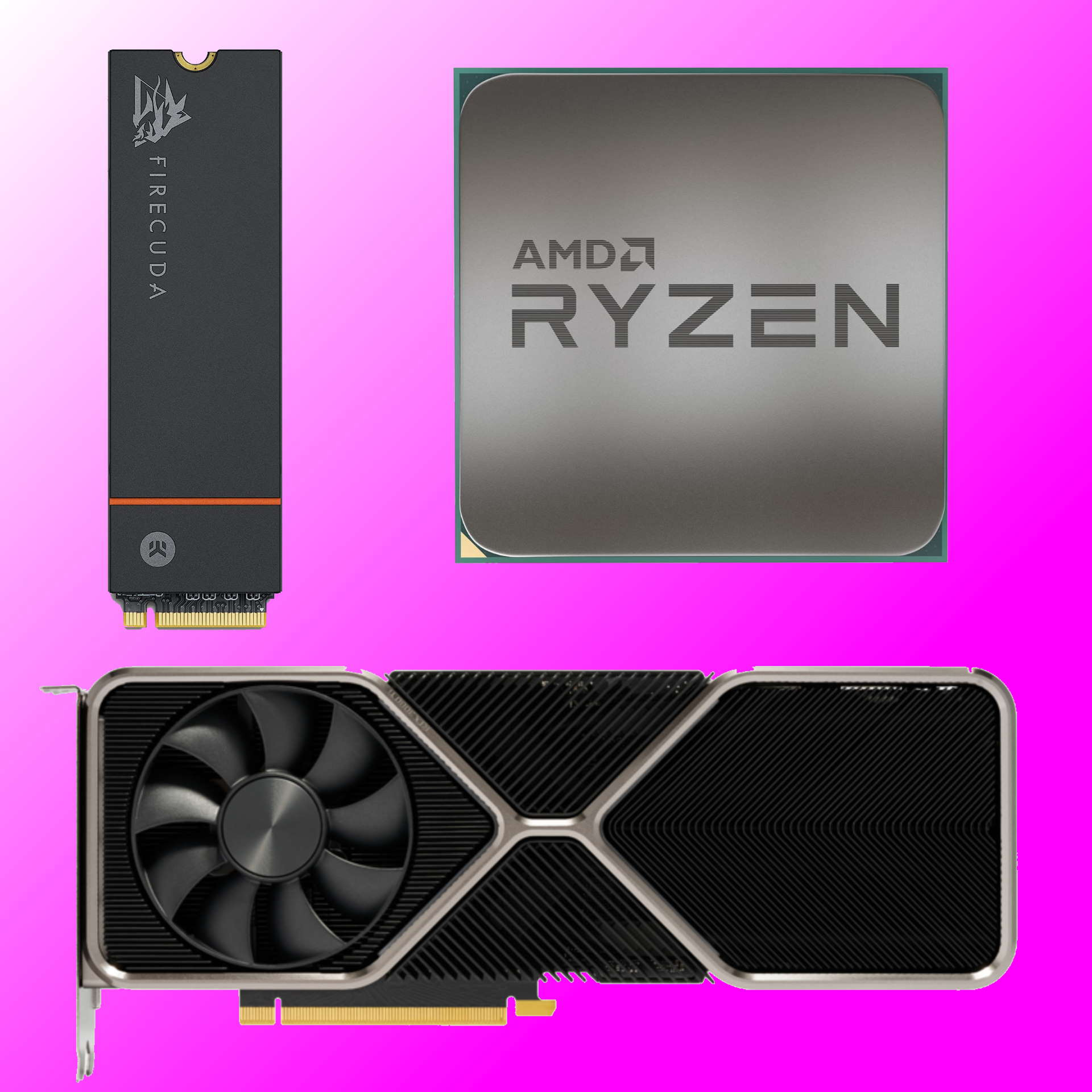
"Grinding" and "graphics card" are two terms that should never be used in the same sentence.
Asus offers several alternative GPU-securing mechanisms as part of its Q-release system, and one has been accused of potentially damaging GPU contact pins.
If there’s one internal PC component that has caused me repeated physical pain over my many years of DIY builds, it’s the traditional GPU retainer clip. It’s fiddly to get to with a beefy modern graphics card, and seems designed to produce sore fingertips and many curse words if used on the regular.
The solution to my issue is a quick-latch system that makes this fiddly work easier. Though as X user @9950pro highlights, a post on Bilibili says a latch design used on Asus Intel 800-series and AMD 800-series boards may risk damaging a GPU under repeated usage.
As demonstrated above, the quick-release system in question requires you to pull the far left of the card up first (the output socket side) which causes the card’s body to push down on the retainer clip.
There’s a slight bit of rotation of the pins in the socket as the card goes in and out, along with a fair bit of resistance against the contacts, which seems like it could potentially cause wear.
Our Nick has been using this exact release system on two Asus motherboards, and in his opinion, repeated usage could grind the contacts over time.
The mobo demonstrated above is the Asus ROG Strix B850-F Gaming Wifi, and while Nick has his reservations about the mechanism, he hasn’t experienced any undue wear as of yet.
In a screenshot posted later in the Bilibili thread, a user appears to have been speaking with an Asus representative regarding further contact over the issue. I’ve reached out to Asus for comment, and will update this story with any further information I receive.
It’s worth noting that Asus uses multiple mechanisms with its Q-release motherboards, including this one demonstrated below, which releases the GPU in a more conventional manner.
Yes, this particular PC is very dusty. Our Jacob has since informed me he has taken an air blower to the internals, so rest assured it’s in much better shape now.
Anyway, all PCIe slots put some degree of resistance on the contact pins when a GPU is inserted and removed, but we swap graphics cards out of conventional slots all the time without undue wear. If this particular mechanism is causing contact pins to be chewed faster than others, it seems like some tweaks might be required to prevent damaging users cards.
It’s difficult to get an exact figure on exactly how many mating cycles a modern PCIe slot is rated for. Regardless, it’s thought to be relatively low, although that’s the slot itself and not necessarily the pins on the GPU. And the amount of cycles a part is rated to and the amount that may cause this sort of wear could be quite different.
If you’re not the sort of person that pulls GPUs in and out of a system constantly, however, and you use an Asus motherboard with this particular release mechanism, I doubt there’s much to worry about. Most users will only swap cards out every few years or so, and it seems unlikely that this particular release system would do much damage with occasional use.
Still, excessive grinding and GPU pins? It’s the sort of thing that makes my teeth feel funny just thinking about it.
Best CPU for gaming: Top chips from Intel and AMD.
Best gaming motherboard: The right boards.
Best graphics card: Your perfect pixel-pusher awaits.
Best SSD for gaming: Get into the game first.





